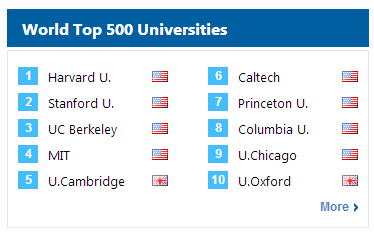Beware the Lessons of Competitive US Higher Ed
U.S. universities consistently top the Times Higher Education and Shanghai Rankings of the world’s universities. In the 2013-2014 Times Rankings, seven of the top 10 and 21 of the top 30 global universities were located in the US.
If we leave aside what these rankings actually measure, for many policymakers in other places around the world, such as Australia, these rankings signal something uniquely successful about the American model of higher education. Perhaps the American economic model in general should be mimicked (minus of course that nasty financial crisis thing a few years back).

This article by Steven C. Ward originally appeared at The Conversation, a Social Science Space partner site, under the title “Copying the myth of competitive excellence in US higher education”
Just as software developers or department store chains must continually innovate and improve or be killed off, universities in the mythical US model of hyper-competition must continually prove themselves or face elimination.
This isn’t how the US system works
The U.S. system hasn’t really worked this way, at least historically, but many neoliberal reformers in the U.S. are working feverishly to try to turn that myth into a reality.
To grasp what is happening to higher education in Australia, the U.K. and elsewhere it is important to have a more thorough grasp of the workings of the US system and where it is headed.
If we take a closer look at the top 10 Times-ranked institutions in the U.S. we notice that of the seven in the top 10, six are private, non-profit universities with both billions of dollars in their individual endowments (Harvard has close to $30 billion alone) and hundreds of millions of dollars of annual research support from the U.S. government. They also benefit from other state and federal support given directly to their students.
The only public institution present in the Times Rankings is the University of California, Berkeley. This has, at least until recently, been a recipient of strong state funding support. Such strong state support is also historically true of public institutions a little further down the global rankings such as the University of Michigan and the University of Texas.
So the driver here is not really competition, although some does exist particularly in sports, but financial support and a broader ethical commitment on the part of the state and the institutions to build strong, quality education at both non-profit private universities and public ones.
This is planned by both the institution and the state. It is not the result of the invisible hand of the competitive market working its magic. Nor is it a matter, as argued in the Australian Higher Education 2014-2015 Budget, that “excessive regulation is constraining diversity, innovation and quality in the sector.”
Economic policies are harming US higher education
In the States the idea that U.S. higher education is a superstar is nowhere to be found. If we read most reports on higher education in the US it would seem that it is in a steep decline, if not an all-out free fall.
Official government reports echo this narrative of decline. The Spellings Commission in 2006 chastised American higher education for being “increasingly risk-averse, at times self-satisfied, and unduly expensive”. The report warned that:
without serious self-examination and reform, institutions of higher education risk falling into the same trap, seeing their market share substantially reduced and their services increasingly characterised by obsolescence.
More recently the National Governors Association Report 2014 America Works: Education and Training for Tomorrow’s Jobs declared:
Now, more than a decade into the 21st century, Americans risk falling behind as technological advances accelerate demands for talented workers.
The U.S. system is often held up as providing a market-based roadmap for others to follow, while at home it is condemned for not being market-oriented enough. There is much to be admired in the American system particularly in its post-1945 commitment to providing quality public higher learning on par with anything offered by the privates.
However, the current direction of American reforms is well on the way to destroying and replacing that system. This does not deserve to be mimicked anywhere. The American system may indeed be in decline, as neoliberal critics argue, but the very prophets claiming to save it are driving that decline.![]()
































































































